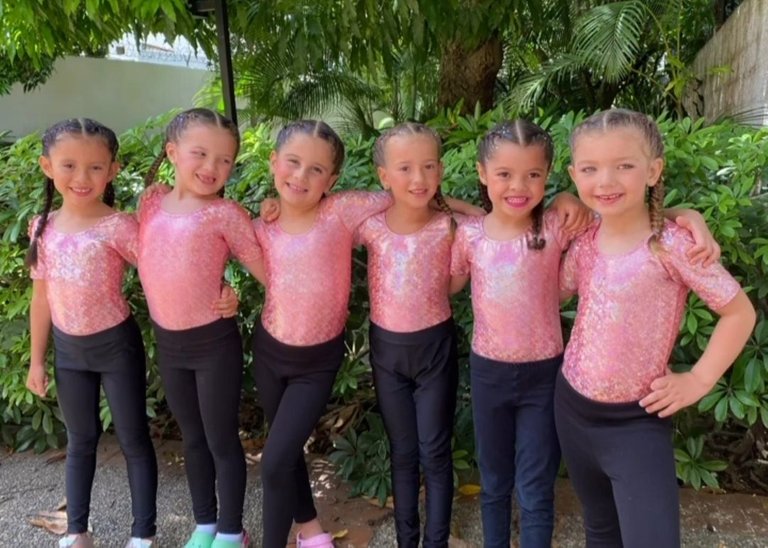
El domingo fue la presentación de mis niñas, con 5 años de edad lo hicieron maravilloso. Estaba súper nerviosa, incluso más nerviosa que cuando me presento, quizá por ser mi primera presentación en la escuela. De hecho he montado otras presentaciones en telas y siempre el grado de nervios en el mismo, creo que es normal. El público era más que todo familiares de las niñas.
Antes de abrir sala, se hizo un ensayo general con todos los grupos, la directora de la escuela y las instructora. El trabajo en equipo entre todos fue muy bonito.
La danza aérea es una forma de arte en la que los bailarines usan equipos suspendidos en el aire, en este caso las telas, para realizar movimientos fluidos y acrobáticos.
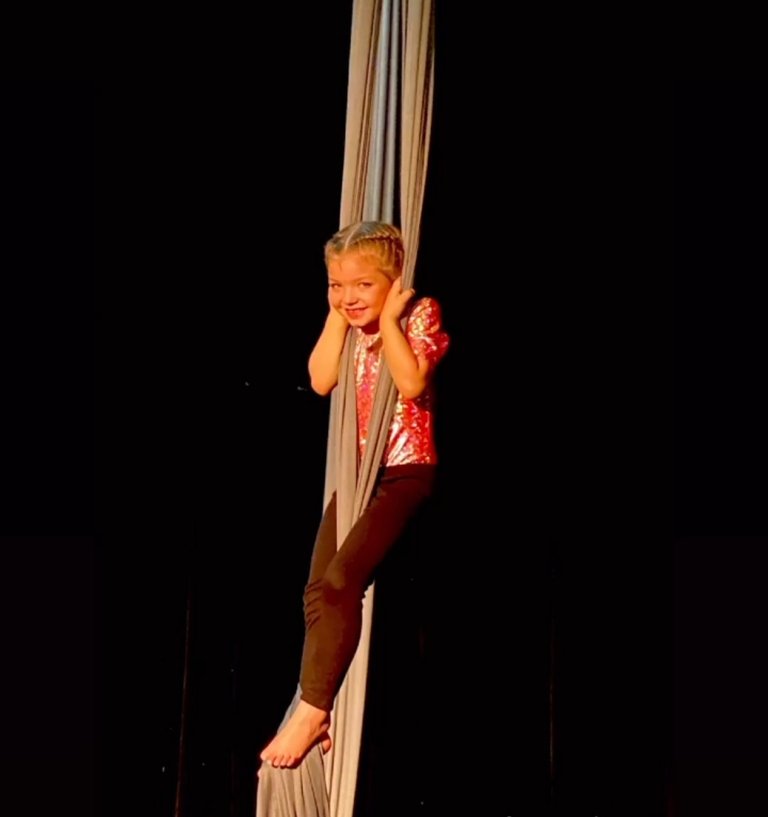
Les cuento un poco lo necesario y puntual para hacer una buena presentación en danza aérea, es importante tener en cuenta algunos aspectos clave:
Seguridad: La seguridad es lo primero en la danza aérea. Los bailarines deben estar totalmente seguros y cómodos con el equipo que están usando, y deben tener un conocimiento profundo de las técnicas de seguridad y los procedimientos de emergencia. Además, el equipo debe ser inspeccionado y mantenido regularmente para asegurarse de que esté en buenas condiciones.
Coreografía: La coreografía de la presentación debe ser interesante y variada, y debe destacar las habilidades y la creatividad de los bailarines. La música también es importante y debe complementar la coreografía.
Técnica: Los bailarines deben tener una técnica fuerte y habilidades acrobáticas sólidas para realizar los movimientos de manera segura y efectiva.
Actitud escénica: Los bailarines deben tener una actitud positiva y enérgica en el escenario para mantener al público interesado y comprometido con la presentación.
Vestuario: El vestuario debe ser adecuado para la danza aérea y debe complementar la coreografía y la música.
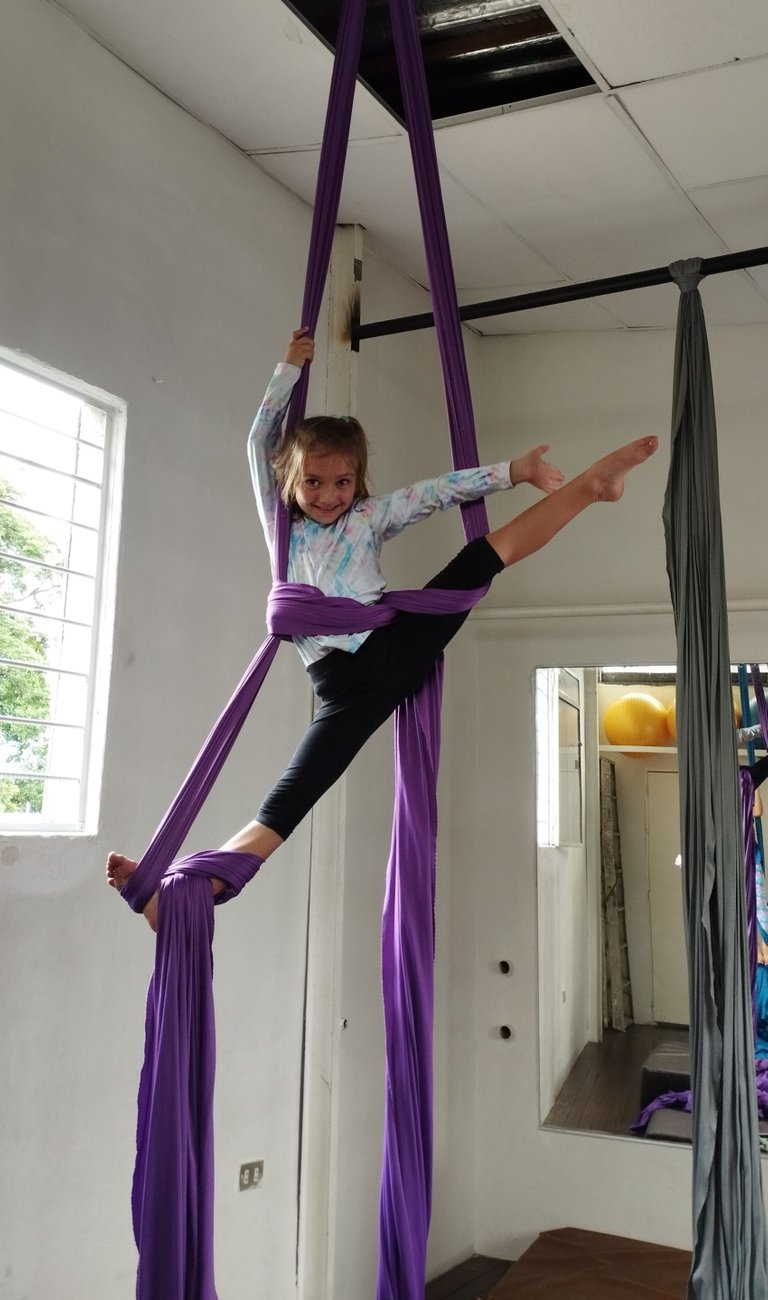
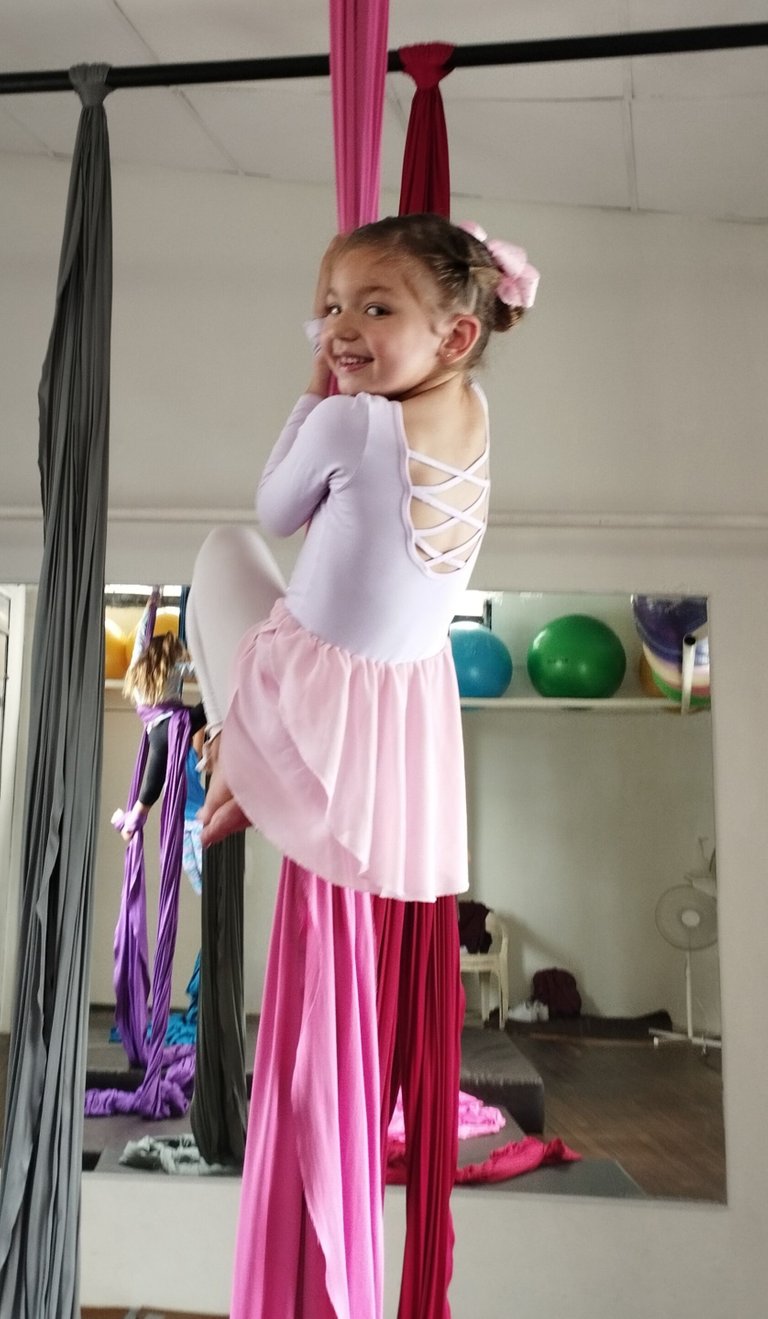
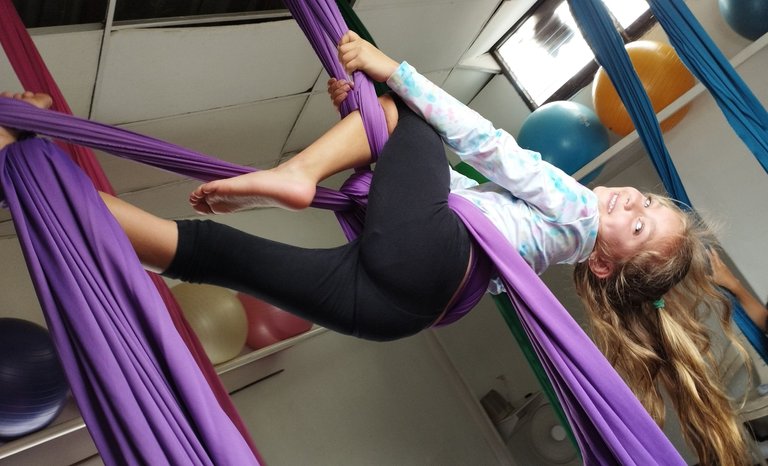
Lo hermoso de ser maestra de niños es que día a día se ve el avance súper veloz de ellos, tienen muy poco miedo al hacer las suspensiones, inversiones y escapes. Mis niñas son transparentes y cada día aprendo también de ellas. Algunos de ellos tienen miedo escénico. Pero ese domingo las ayude alentandolas a dar lo mejor de si.
Algunas sugerencias para ayudar a los niños a superar el miedo escénico:
Practicar: La práctica es una de las mejores formas de superar el miedo escénico. Ensaya varias veces la presentación o el acto para que el niño se sienta más seguro y seguro de sí mismo.
Crear un ambiente seguro: Es importante crear un ambiente seguro y de apoyo para el niño. Asegúrate de que el niño se sienta cómodo y seguro con su entorno, su vestuario y el equipo de sonido y luces si los hay.
Visualización: La visualización positiva es una técnica efectiva para ayudar a reducir el miedo escénico. Pide al niño que imagine una presentación exitosa y que se vea a sí mismo actuando con confianza y seguridad.
Respiración profunda: La respiración profunda es una técnica de relajación que puede ayudar a reducir la ansiedad y el estrés. Enséñale al niño a inhalar profundamente por la nariz y exhalar lentamente por la boca.
Reforzamiento positivo: El refuerzo positivo es importante para ayudar al niño a sentirse más seguro y confiado. Elogia al niño por sus esfuerzos y por los logros que ha logrado.
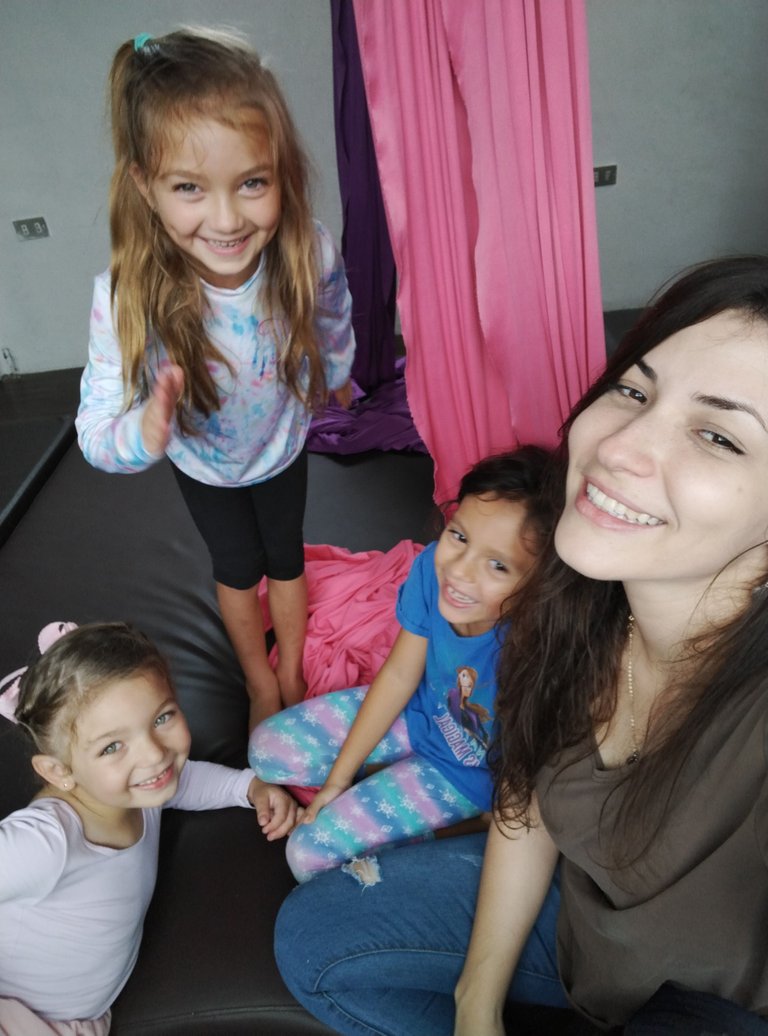

English

Sunday was the presentation of my girls, with 5 years of age they did wonderful. I was super nervous, even more nervous than when I perform, maybe because it was my first performance at school. In fact, I have staged other presentations on canvas and the degree of nerves is always the same, I think it is normal. The audience was mostly relatives of the girls. Before opening the room, a general rehearsal was held with all the groups, the school director and the instructor. The teamwork between everyone was very nice. Aerial dance is an art form in which dancers use equipment suspended in the air, in this case fabrics, to perform fluid, acrobatic movements.

I will tell you a little about what is necessary and punctual to make a good aerial dance presentation, it is important to take into account some key aspects:
Safety: Safety comes first in aerial dance. Dancers must be completely safe and comfortable in the equipment they are using, and must have a thorough understanding of safety techniques and emergency procedures. In addition, the equipment must be regularly inspected and maintained to ensure that it is in good condition.
Choreography: The choreography of the performance should be interesting and varied, and should highlight the skills and creativity of the dancers. The music is also important and must complement the choreography
Technique: Dancers must have strong technique and solid acrobatic skills to perform the moves safely and effectively.
Stage attitude: Dancers must have a positive and energetic attitude on stage to keep the audience interested and engaged in the performance. 5. Costume: Costume must be suitable for the aerial dance and must complement the choreography and music.



The beautiful thing about being a children's teacher is that every day you see their super-fast progress, they have very little fear when doing suspensions, inversions and exhausts. My girls are transparent and every day I also learn from them. Some of them have stage fright. But that Sunday help them by encouraging them to give their best. Some suggestions to help children overcome stage fright:
Practice: Practice is one of the best ways to overcome stage fright. Rehearse the presentation or act several times to make the child feel more confident and self-assured.
Create a safe environment: It is important to create a safe and supportive environment for the child. Make sure that the child feels comfortable and safe with his environment, his clothes and the sound and lighting equipment if there are any.
Visualization: Positive visualization is an effective technique to help reduce stage fright. Ask the child to imagine a successful presentation and see themselves acting confident and confident.
Deep Breathing: Deep breathing is a relaxation technique that can help reduce anxiety and stress. Teach the child to take a deep breath in through the nose and slowly out through the mouth.
Positive reinforcement: Positive reinforcement is important to help the child feel more secure and confident. Praise the child for his efforts and for the accomplishments he has made.


Genial, arte pura!
Siii 😊
Si quieres formar parte de nuestro trail de curación, ingresa a HIVEVOTE, haciendo clic en la imagen del capybara aristocratico. Capybaraexchange tu casa de cambio, rapida, confiable y segura
Congratulations @vicnzia! You have completed the following achievement on the Hive blockchain And have been rewarded with New badge(s)
Your next target is to reach 97000 upvotes.
You can view your badges on your board and compare yourself to others in the Ranking
If you no longer want to receive notifications, reply to this comment with the word
STOPCheck out our last posts: